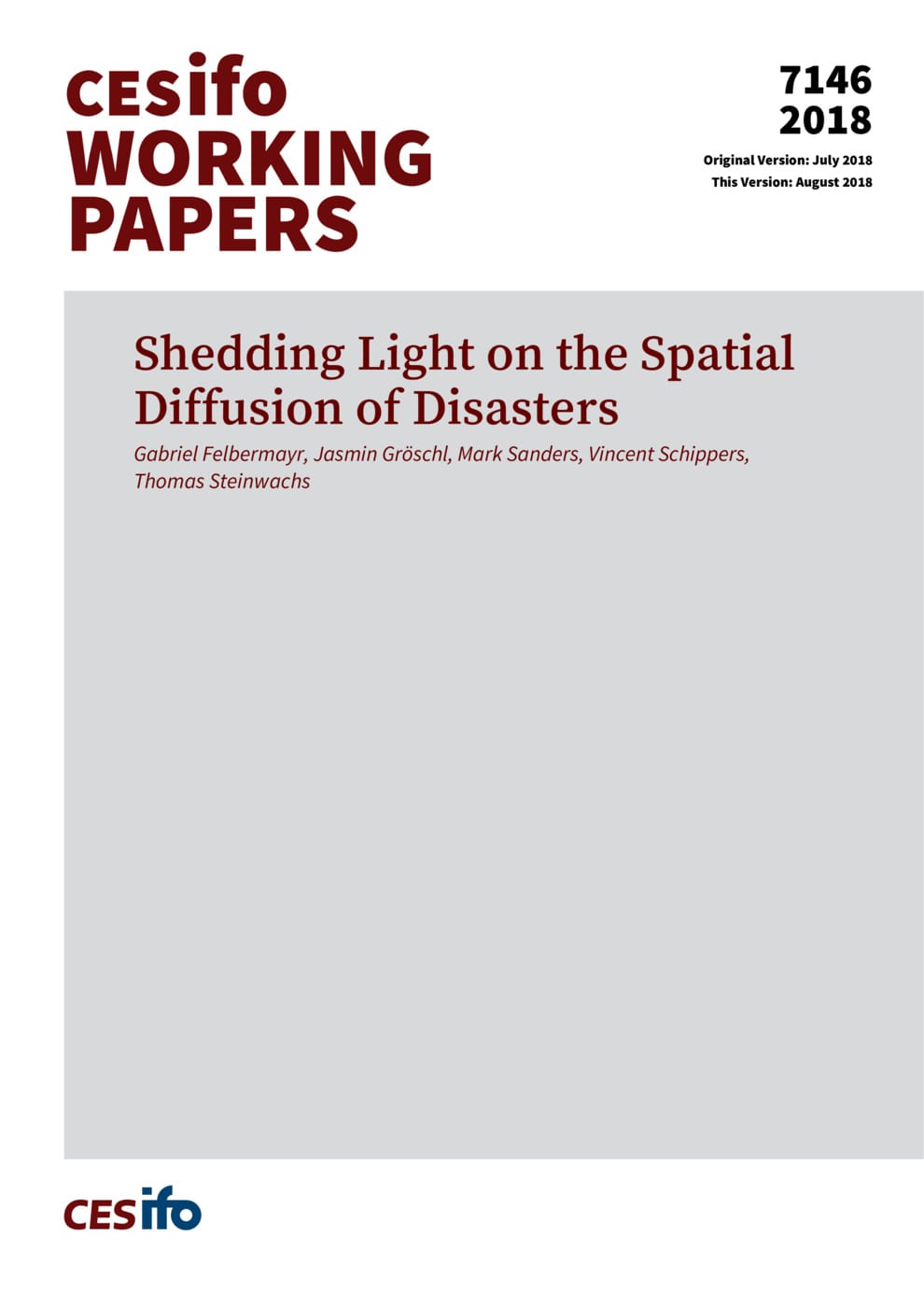Shedding Light on the Spatial Diffusion of Disasters
CESifo, Munich, 2018
CESifo Working Paper No. 7146

Climate research suggests that global warming will lead to more frequent and more extreme natural disasters. Most disasters are local events with effects on local economic growth. Hence, assessing their economic impacts with the help of econometric country-level analysis may lead to biased results. Moreover, correct identification is further complicated by the possibility that local shocks shift production and consumption to neighboring locations. In this paper, annual night-time light emission data covering about 24,000 grid cells for the years 1992-2013 are matched to geocoded information on meteorological and geological events. Spatial econometric panel methods are applied to account for interdependencies between locations. Interpreting variation in light emissions as reflecting changes in economic activity, findings convey evidence for pronounced local average treatment effects and strong spatial spillovers, particularly for weather shocks. In particular, results suggest that spatial shifts of economic activity after a natural disaster are a rather local phenomenon, stressing the importance of local adaptation policies. Moreover, substantial heterogeneity across income groups and regions is identified.
Fiscal Policy, Macroeconomics and Growth
Energy and Climate Economics